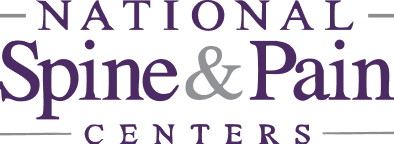Do you ever feel a stabbing pain, numbness, burning, or “pins and needles” sensations? If you have any of these unpleasant symptoms, you may have Neuropathic Pain (NP), commonly referred to as nerve pain or neuropathy.
According to the National Library of Medicine, approximately 3% to 17% of the general population experience nerve pain. The pain can vary in intensity for those who experience it and managing it can be difficult because the efficacy of treatments is limited. So, it’s vital to receive proper care in diagnosing the underlying conditions to find the best way to treat and control neuropathic pain.
What is Neuropathic Pain?
Neuropathic pain is unlike the “usual” pain you have immediately after an injury. With NP, nerve fibers are damaged and become overactive. They send inappropriate signals to other pain centers in the spinal cord and brain. Despite a lack of tissue damage, the pain quickly reaches unbearable levels and can persist for years if left untreated.
For many patients, NP will be characterized by a shooting or burning pain.
NP can affect your central nervous system (CNS), the part of your body composed of yourbrain and spinal cord, or your peripheral nerves, any nerves located outside your CNS.
Does neuropathy ever go away?
Many patients ask their providers how they can make neuropathy pain go away. While neuropathy pain cannot be cured entirely, there are multiple ways to treat the pain so it does not get worse.
Costs of living with Neuropathic Pain (NP)
Every year, in the United States, patients with NP spend over 100 billion dollars on doctor visits. Another 100 billion dollars are lost due to low productivity and missed workdays. In 2004, US scientists looked at the cost of medical visits for a total of 55,686 adult patients with NP.
They found that:
- The most common cause of NP was back and neck pain (62.3% of patients), followed by causalgia (12.1%) and diabetic neuropathy (10.8%).
- Patients with NP were more likely to have other pain-related conditions such as fibromyalgia,osteoarthritis, and coronary heart disease.
- Neuropathic pain led to a 3-fold increase in the use of healthcare resources.
- Quality of life was significantly reduced in NP patients due to fatigue, sleep deprivation, anxiety, and depression.
Economically, those struggling with NP are also hit hard. In another study, researchers found that the indirect costs associated with mild nerve pain averaged $17,244, while severe NP averaged $33,065. With these high monetary costs and diminishment of quality of life, it’s vital to get treatment as soon as you can.
Who needs treatment for Neuropathic Pain?
People with the following conditions need treatment for NP :
- Amputation
- Cancer that requires chemotherapy or radiation treatment
- Complex regional pain syndrome (CRPS)
- Diabetes
- Trigeminal neuralgia (face pain)
- HIV/AIDS
- Long-lasting shingles pain
- Spinal nerve pressure from surrounding tissues
- Chronic pain after surgery
- Nerve compression by tumors
- Fibromyalgia
When to see a pain specialist for Neuropathic Pain
Neuropathic pain is difficult to treat, with only 40-60% of people reaching partial relief. However, early diagnosis and treatment from a pain specialist can decrease your pain and prevent further nerve damage.
Seek medical care right away if you notice the following symptoms:
- Numbness
- Burning
- A sensation of “pins and needles”.
- Abnormal painful, itchy, burning sensations.
- Extreme sensitivity to touch.
- Increased sensitivity to pain.
Treatment goals
Since treatment of NP is not in eliminating the condition, pain specialists focus on different goals, including:
- Controlling the underlying disease (e.g., radiation to shrink a tumor that compresses a nerve in a cancer patient).
- Relieving the pain.
- Maintaining functionality (your ability to move, work, drive).
- Improving the quality of life (sleep, mood, concentration).
Multimodal Therapy is an effective approach for treating NP. This therapy combines several treatments to reach a superior pain relief, as compared to just using one.
Treatment for NP includes a combination of:
- Treatments from a pain specialist
- Treatments from a therapist
- Surgeries to treat pain
Treatments from a pain specialist
Medications
Antidepressants: Some can effectively treat NP. The doses used to treat pain are lower than the doses for depression. However, if you receive treatment with antidepressants for pain, it doesn’t mean that you’re depressed or that you’re receiving adequate treatment for depression. You may need additional treatment.
There are several classes of antidepressants. All of them increase certain neurotransmitters and chemicals that allow your nerves, spinal cord, and brain to communicate. A side effect of antidepressants is drowsiness. However, this may help you sleep if you take your medications in the evening.
Anticonvulsants: They were found to relieve NP. There is no definite test to determine if an anticonvulsant will decrease your particular type of pain, so you’ll need a short trial period.
Topical agents: These medications go directly on the skin over a painful area. When compared to taking pills, they have a lower risk of widespread side effects (drowsiness, dizziness). Lidocaine patches release medicine slowly over a period of 12 hours. Capsaicin cream is made from hot peppers. It may improve NP in the periphery (leg, arm, or chest area). It is often used in diabetics and people with shingles pain.
Pain relievers: Over-the-counter pain medications, such as anti-inflammatory drugs and Tylenol (Acetaminophen), can relieve mild NP. Opioids are not always effective for NP.
Pain-relief Injections
Nerve blocks: These injections treat pain that starts in a particular nerve or a group of nerves that serve the same purpose.
There are different types of nerve blocks:
- Peripheral nerve block: This procedure uses local anesthetics and steroids to interrupt pain signals along a nerve, usually in an arm, leg, or breast area.
- Sympathetic nerve block: This block targets nerves that control basic functions like blood flow or digestion. It controls painful blood vessel spasms, CRPS pain, and chronic stomach pain.
- Neurolytic block: Nerve fibers are intentionally damaged with chemicals, heat, or freezing temperatures. The effects last for weeks, months, or longer. Neurolytic block helps in the setting of cancer pain. However, it carries a risk of increased pain and is used on a case-by-case basis.
Epidurals: An epidural steroid injection is a common treatment for pain in a certain body area. Your pain specialist injects steroids and a local anesthetic around the spinal cord. Epidurals improve NP due to spinal stenosis, disc herniation, and postherpetic neuralgia. The effects last from weeks to months.
Implantable Devices
This is a growing field of pain medicine. It uses devices implanted in your spinal area to treat long-lasting pain. The devices are often used to treat NP that failed to improve with oral medications, pain-relief injections, or physical therapy.
Spinal cord stimulators: Your pain specialist places these small devices under the skin of your back, buttons, or abdomen. They have thin wires (electrodes) that send mild electrical bursts to your spinal cord in order to stop pain signals. Spinal cord stimulation is best used for:
- Nerve root pain
- Failed back surgery syndrome (FBSS)
- CRPS
- Neuropathy
RELATED: Peripheral Nerve Stimulation: How it works to block pain
Intrathecal (pain) pumps: These small devices deliver medication through a thin tube to the space around your spinal cord. They release opioids alone or opioids combined with other medications in a time-controlled manner. Intrathecal pumps treat pain caused by:
- Cancer
- FBSS
- CRPS
- Body-wide muscle spasms
Treatment with electric pulses
Mild electric current pulse treatments relieve some types of NP and are useful for people concerned about medication side effects.
Transcutaneous Electrical Nerve Stimulation (TENS): You attach several electrodes to the skin over a painful area such as the neck or back. When the TENS device is on, you’ll feel tingling. You can carry this battery-operated device with you and use it throughout the day.
Regenerative therapy
Platelet-rich plasma (PRP): A lab processes your blood to obtain highly concentrated platelets. These are injected into painful joints, tendons, and ligaments. This treatment relieves pain in the facet joints and SI joints.
Platelet growth factor epidurals: A lab processes your blood to obtain a high concentration of platelets, growth factors, and other helpful agents. These are placed into the epidural space, where they help with back pain (sciatica, radiculopathy).
Stem cells: Cells from your bone marrow are used to heal injured bones, ligaments, tendons, cartilage, and muscles. They are often used in the spine to treat facet joint pain due to arthritis or disc pain due to aging and injury.
Treatments offered by a therapist
- Physical therapy: It lowers peripheral neuropathy pain. If you have muscle weakness due to NP, physical therapy helps improve your movements.
- Counseling: Treatments for stress, depression, or anxiety decrease the negative impact of NP.
- Acupuncture: This traditional Chinese treatment triggers the release of pain-numbing chemicals.
- Massage:. While it’s unclear whether massage helps with NP directly, it can relieve painful muscle spasms that start over your area of pain.
Surgery that treats pain
Often, surgery creates NP after a mastectomy, an amputation, or a failed back surgery. However, in certain situations, surgery decreases NP.
Examples of surgeries include:
- Surgery to remove a tumor: Used when pressure from a tumor causes nerve pain.
- Microvascular decompression: This surgery removes vessels that press on nerves and cause pain. It often improves trigeminal nerve pain.
- Motor cortex stimulation: Electrical bursts travel to the part of the brain that controls movement. This procedure is used to treat phantom limb pain, trigeminal nerve pain, post-stroke pain, and more.
Comprehensive Nerve Pain Treatment
At NSPC, we fully understand the challenges of having to live with neuropathic pain. With effective management of neuropathy, you can experience a decrease in pain levels and relief from related conditions, including insomnia, depression, and anxiety.
Our pain specialists are here to help you. Find an NSPC-affiliated practice near you to get started.


.2409041054535.jpg)

.2508191744197.jpg)
.2503201349082.jpg)
